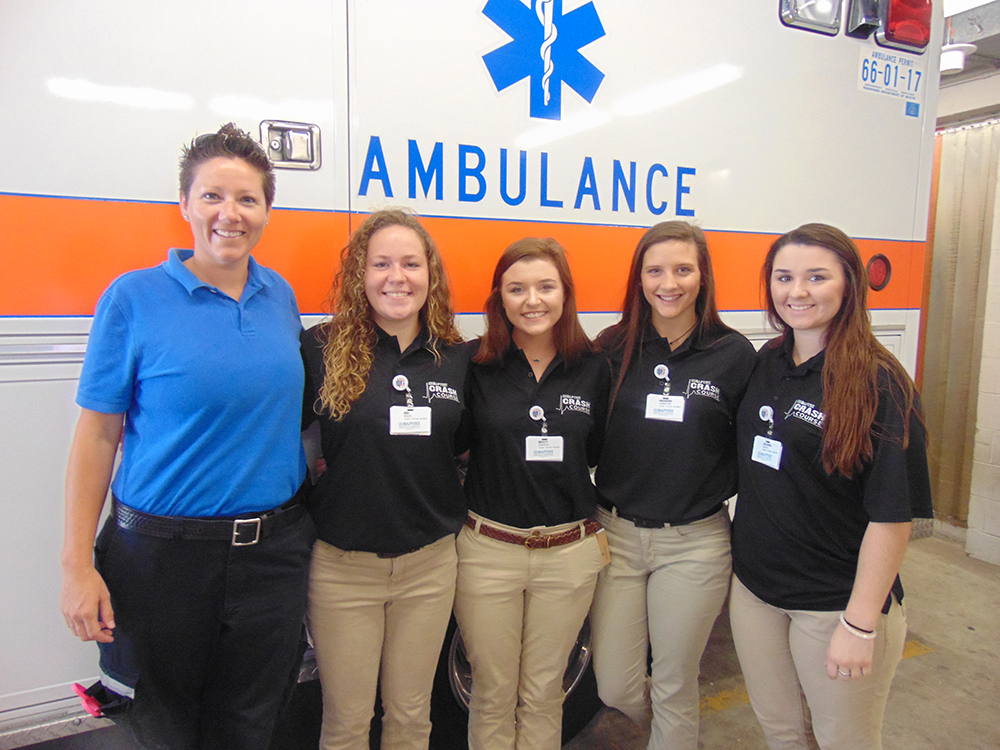Baptist physical therapist assistant Jeremy Lindsey and physical therapist Jay Schultz were recently recognized as Service First Champions at Baptist Memorial Hospital-Memphis for recommending a specific treatment that saved a diabetic patient in his mid-40s from having his foot amputated.
The award is a small reminder of how grateful the pair is to maggots for saving the patient’s foot.
Lindsey began his career at Baptist in 2005, and Schultz joined Baptist in 2010. They had been working with a patient in outpatient therapy for a few months when he was admitted to Baptist Memphis.
The doctors were planning on amputating this patient’s foot because of a diabetic wound that was thought to be untreatable.
Both therapists knew about the wound care treatment they believed would benefit this patient, but the procedure was not used at Baptist.
Maggot therapy has been used to treat patients for centuries, but with evolving advancements, it is no longer very common. However, maggot therapy has been gaining more credibility with wound care.
“We were going to have to amputate his foot, but we wanted to try to clean up [the dead tissue] well enough to give it a chance to heal,” said Lindsey. “With the way the wound was, we could not use debridement sufficiently enough to clean it up. Our last option was to use maggots.”
Lindsey has been a licensed physical therapist assistant since 1997 and has worked in wound care since he started in physical therapy.
Schultz graduated from the University of Tennessee’s Health Science Center in 2010 with his Doctorate of Physical Therapy.
“I have always known about maggot therapy,” said Lindsey. “It produces fast results and is much less painful than sharps debridement, where dead tissue is scraped away.”
To complete the procedure, the pair gathered information and presented their request to the physician, risk management and administration at Baptist Memphis.
“A step-by-step protocol was created and sent to risk management for approval, including risks [and] contraindications,” said Schultz.
The maggots were specific sterile maggots that were kept in a controlled atmosphere from Monarch Labs in Irvine, Calif.
“Jeremy and I reviewed the online tutorials and provided information from Monarch Labs, as well as available research articles detailing [the] technique,” said Schultz.
The therapy consisted of placing the sterile maggots in the wound, and securing them with a moist gauze dressing for 24 to 48 hours. While within the wound, the maggots ate away at the dead tissue and once they expanded to their capacity, the maggots congregated to the outside of the wound.
The wound had to be carefully dressed with a moist gauze to keep the maggots alive, and the dressing prevented the maggots from escaping the wound and crawling around the room.
“This procedure was ideal for the patient because of his age,” said Lindsey. “The diabetic patient was in his mid-40s and considerably young to have his foot amputated.”
This type of treatment is wound-specific and depending on the wound, the procedure could be done multiple times to clean the wound.
With the success of the first treatment, Lindsey and Schultz ordered a second batch of maggots for the patient and were able to clean the wound enough for the tissue to naturally grow back and fill in.
A surgeon was then able to close up the wound, and the patient was successfully able to avoid amputation.
Physical therapist Jay Schultz, left, and Jeremy Lindsey, physical therapist assistant and Epic analyst, recently earned Service First Awards at Baptist Memorial Hospital-Memphis for
recommending maggot therapy for a diabetic patient to save him from having his foot amputated. The procedure is not used at Baptist and the pair gathered information and presented their request to the physician, risk management and administration. The treatment was approved and it successfully healed the patient’s wound.

